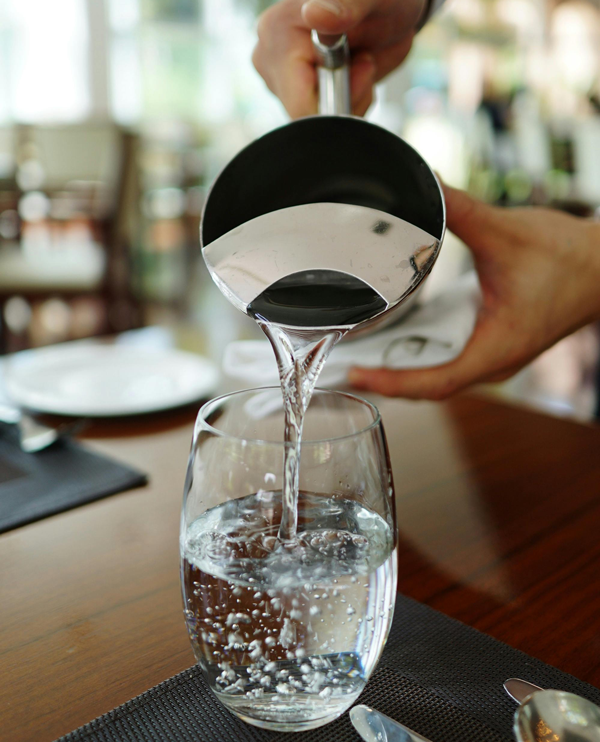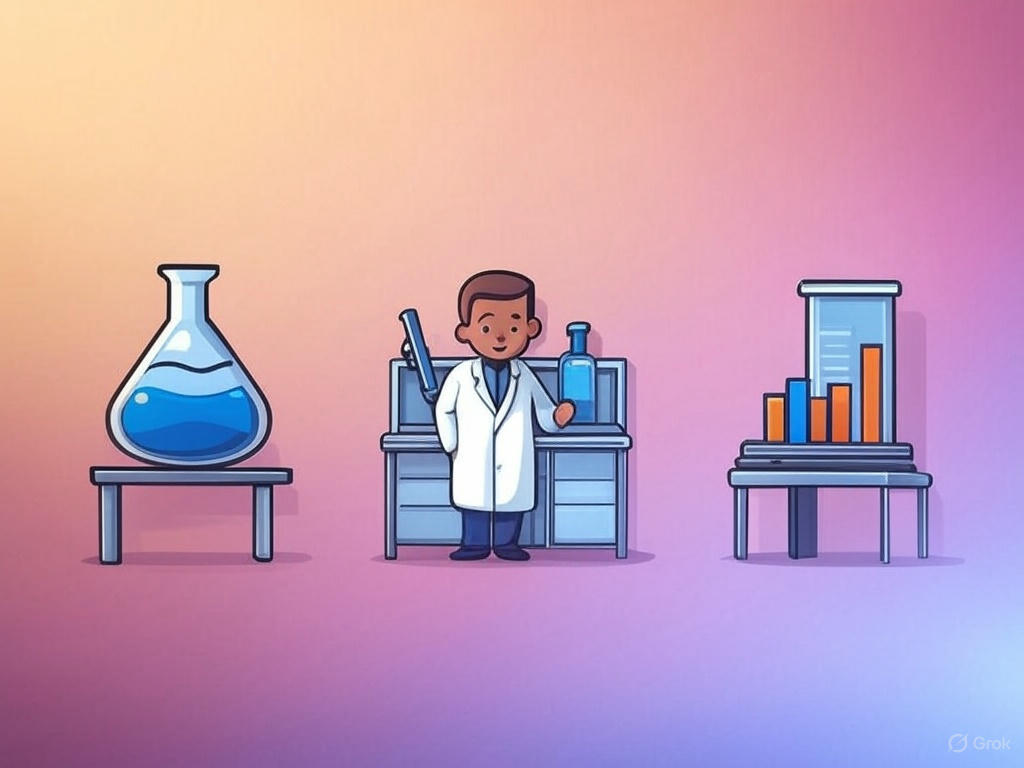
Why Should You Test Your Well Water?
Well water testing is the first step to ensuring your water is safe for your health. Contaminants like lead, bacteria, and nitrates can sneak in unnoticed, but our comprehensive testing checks for 16 critical factors, giving you confidence in every sip.
- Identify hidden risks in your water supply.
- Safeguard your family’s health.
- Get clear, actionable results fast.
Testing is not limited to just well water. Municipal water quality can also be tested.
Looking for your report?
What We Test For
Hardness: Affects taste, plumbing, and appliance lifespan.
E. coli Bacteria: Signals fecal contamination and health risks.
Iron: Causes staining and metallic taste.
Copper: Can leach from pipes, impacting health in high levels.
Manganese: Leads to discoloration and potential neurological effects.
Lead: A toxic metal harmful even in small amounts.
Chloride: Affects taste and corrosiveness.
Nitrite: Dangerous for infants, often from runoff.
Sodium: Impacts taste and health for those on low-sodium diets.
Arsenic: A naturally occurring toxin linked to serious illness.
Nitrate: Common in fertilized areas, harmful to babies.
Calcium: Contributes to hardness and scaling.
pH: Ensures water isn’t too acidic or alkaline.
Fluoride: Beneficial in moderation, but excess can harm.
Coliform: Indicates general bacterial contamination.
Radon in Water: A radioactive gas that poses health risks
See below for additional details regarding these contaminants.
How It Works
1. Sample Collection
We draw a water sample at the property.

2. Lab Testing
Laboratory experts analyze for contaminants.

3. Detailed Results
Get a report with insights data.

Contaminant Details
Definition of Abbreviations
MCL = Maximum Contaminant Level – The level that cannot be exceeded by public water systems.
SMCL = Secondary Maximum Contaminant Level – Threshold levels for aesthetic concerns; taste, odor, and staining.
AL = Action Level – 90% of samples must fall below this level, pertains mainly to public water supplies.
mg/L = Milligrams per liter, which is approximately equal to parts-per-million (ppm).
pCi/L = picoCuries per liter.
Contaminant Descriptions
Coliform
Total coliform Present is unacceptable.
- Coli Present in drinking water is unacceptable.
- Coli in swimming water – Recommended Level = <88cts/100mi.
Total coliform is a group of bacteria with common characteristics used to indicate unacceptable drinking water quality. Within the total Coliform group, the E. coli bacteria are specifically used to indicate fecal contamination. High non-coliform levels are usually from the drilling of the well or an indication of surface water intrusion. When non-coliform is greater than (> 200cts/100mi), they can obscure the growth of coliform.
If total coliform, especially E. coli and/or high non-coliform counts are present in a well, it needs to be checked for construction problems. It is very common for new or modified wells to have unacceptable bacteria levels, and often it is necessary to disinfect with bleach or chlorine tablets more than once. If you have a positive total coliform, E. coli, or high non-coliform count, you should have received an Unacceptable Bacteria Notification which includes disinfection instructions.
pH
Recommended 6.5-8.5
pH is a measure of the acidity of a sample. The scale is 0-14. A reading of 0-7 is acidic, 7-14 is basic (or alkaline), and 7 is neutral. Acidic water, along with low hardness (soft water), tends to be corrosive to your water pipes, potentially dissolving lead and copper. Basic water itself is not a problem, but may have a bitter taste. Alkalinity, which is a separate measurement, is your water’s capacity against drastic pH changes.
Hardness
The contributors to hardness are calcium and magnesium. The presence of these elements in general is not a health hazard, but hardness elements tend to plate out on water pipes and heating coils in hot water tanks, and reduce the effectiveness of detergents.
- Low (soft) 0 – 75 mg/L
- Moderate 76 – 150
- Hard 151 – 250
- Very Hard 251 +
Water treatment companies often express hardness in grains per gallon. 1 gpg equals 17.1 mg/L.
Iron
SMCL = 0.30 mg/L
Over 0.30 mg/L, iron becomes a nuisance element. It will show its presence as rust stains on water fixtures and if chlorine bleach is used in the laundry, rust spots will appear on clothes. If this happens, use a non-chlorine bleach with your clothes. Common iron removal methods include ion exchange and oxidation filtration.
Manganese
SMCL = 0.05 mg/L
Over 0.05 mg/L manganese becomes a nuisance element and its presence is detected by purplish black staining of kitchen and bathroom fixtures. The 0.05 mg/L SMCL is the threshold for staining by most humans. Above this level your drinking water would have an oily vinyl or metallic taste. A “rotten egg” smell, due to the presence of hydrogen sulfide, is often associated with a high iron and manganese level, which tends to disappear when the iron and manganese are removed. Manganese is also an essential nutrient for humans at approximately 5 mg per day.
Sodium
SMCL = 250 mg/L
Some sodium is found in all natural water supplies, but more so in areas where seawater and road salt seep into the ground. Sodium has no set health hazard level, but those individuals on a low sodium diet should take into account the amount of sodium in their water when determining overall sodium intake.
Chloride
SMCL = 250 mg/L
Though chloride is not considered a health hazard, the standard has been set because of the level at which the average person notices a Salty taste. Chloride is associated with infiltration of road de-icing salt, backwash from a water softener and seawater.
Nitrate & Nitrite
Nitrate MCL = 10 mg/L
Nitrite MCL = 1 mg/L
The presence of nitrate and nitrite generally indicates contamination from a pasture, manure pile, decomposed vegetation or fertilized agricultural land. Nitrates change to nitrites in the body, which reduces oxygen uptake by the hemoglobin. Boiling the water will not help, it will only concentrate the nitrates.
Fluoride
MCL = 4.0 mg/L
Fluoride has been widely used to prevent tooth decay, but in excess it can cause spotted or pitted teeth, called fluorosis. Recommended adult intake of fluoride is 1.0-2.5 mg per day. Children are often given a supplement if the fluoride level in their home drinking water is not sufficient.
Copper
AL = 1.3 mg/L
SMCL = 1.0 mg/L
High copper concentrations are typically a result of corrosive water picking up copper from plumbing lines. The acceptable limit was set because above 1.0 mg/L the water may have an unpleasant taste and cause blue or green staining on water use fixtures.
Lead
AL = 0.015 mg/L
Chronic ingestion of lead has been associated with a large number of harmful health effects, and therefore water with excessive lead levels should not be consumed. High levels can be attributed to old lead piping, lead solder used on copper piping, or some installed pumps. In most cases, lead in your drinking water can be reduced by running the water before filling a glass to drink, pH, alkalinity, and hardness correction will reduce corrosion damage.
Arsenic
MCL = 0.01 mg/L
The US EPA has set the health standard at 0.010 mg/L. Some of the health effects are skin irritation, skin cancer, liver and kidney damage and damage to the central nervous system. Its origin in drinking waters is not fully known, but could come from some of the bedrock, or man-made sources such as metal refining processes or pesticides.
